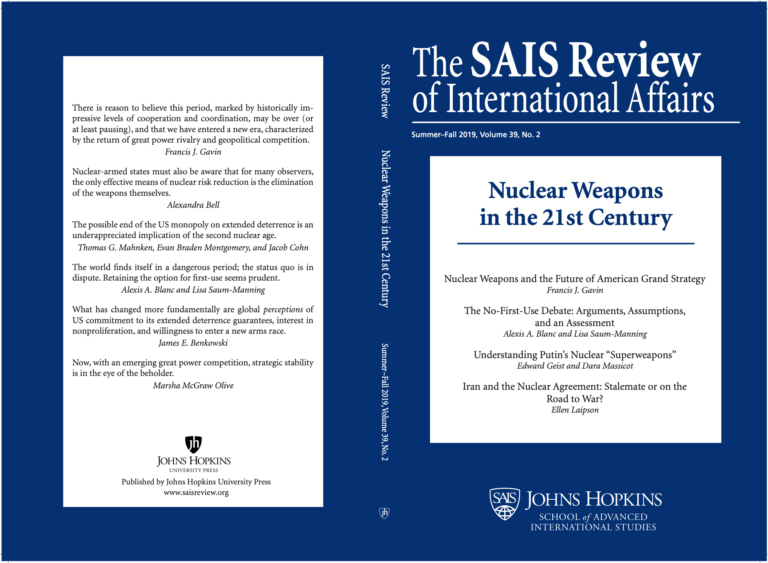
Volume 39, Issue 2 of the SAIS Review of International Affairs seeks to address the topic of nuclear weapons and their role in the 21st century. To that end, the featured essays spotlight some of the most pressing issues affecting nuclear weapons and shaping their future impact on strategy and the world more generally.

This paper examines the African Union's (AU) institutional approach to transnational terrorism. Specifically, its approaches in combating Al-Qaeda in the Islamic Maghreb (AQIM), Boko Haram, and al-Shabaab.

His Excellency Dr. Thani bin Ahmed Al Zeyoudi is the Minister of Climate Change and Environment for the United Arab Emirates

The RCEP was to be a potent vehicle to support the spread of global production networks and reduce the inefficiencies of the multiple prior Asian trade agreements. Yet India still pulled out. Why?

This paper examines Indonesia’s Global Maritime Fulcrum (GMF) initiative, and its present and future importance, primarily in combating the threat of maritime irregular warfare (MIW) in Southeast Asia. Specifically, it references the rise of grey-zone operations in the South China Sea, particularly by China.
Since the United Nations released the 2017 edition of its annual World Population Prospects report that predicted a surge in the population of Africa as early as 2050, African leaders and development economists have debated how the continent should prepare. This article analyzes Africa's looming demographic explosion and its likely consequences to help provide the foundational knowledge required for African leaders to make informed policy decisions.
In international scholarship, the enormous Indic legacy on formulating and categorizing spy networks is more or less forgotten. This analysis will address this void in scholarship by shedding light on the sophisticated Indic spy system.
An examination of Argentina’s current political economy reveals that many structural vulnerabilities persist to this day. Will the current IMF program work?
As this historically significant arms-control treaty unravels, two of the world’s superpowers are heightening the potential for military conflict.
In the 1920s, the ACLU brought civil liberties to the forefront of political discussion. Despite the Bill of Rights being in place, the inability of the judiciary to act on civil liberties caused constraints on the relationship between the state and its citizens. As a result, civil liberties had limited effects on society. As an example of the shifts in civil liberties, Weinrib focuses on the creation of the ACLU as an offshoot of the American Union Against Militarism (AUAM) with an agenda to press the U.S. government for the expansion of civil liberties during WWI. In doing so, the author illustrates the conflict between citizens and the state over civil liberties and the aim of the AUAM to create a balance between social interests and to promote civil liberties.





